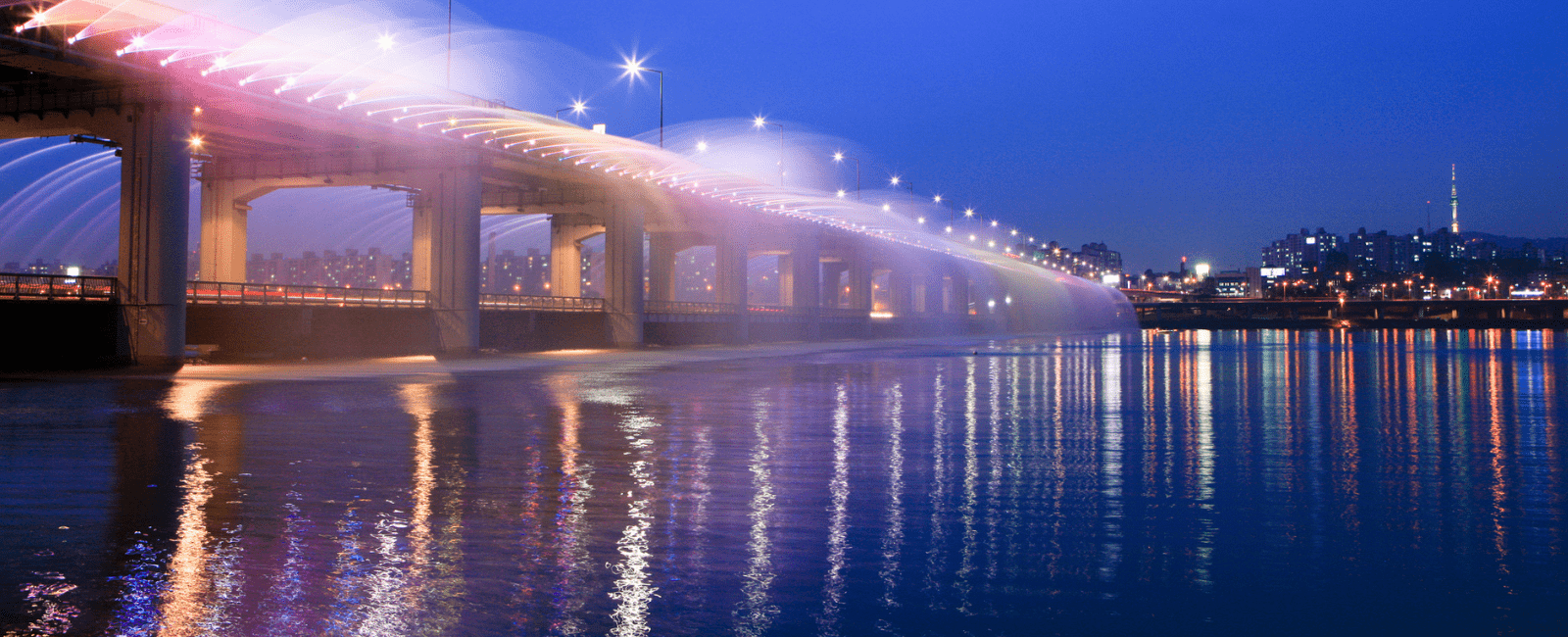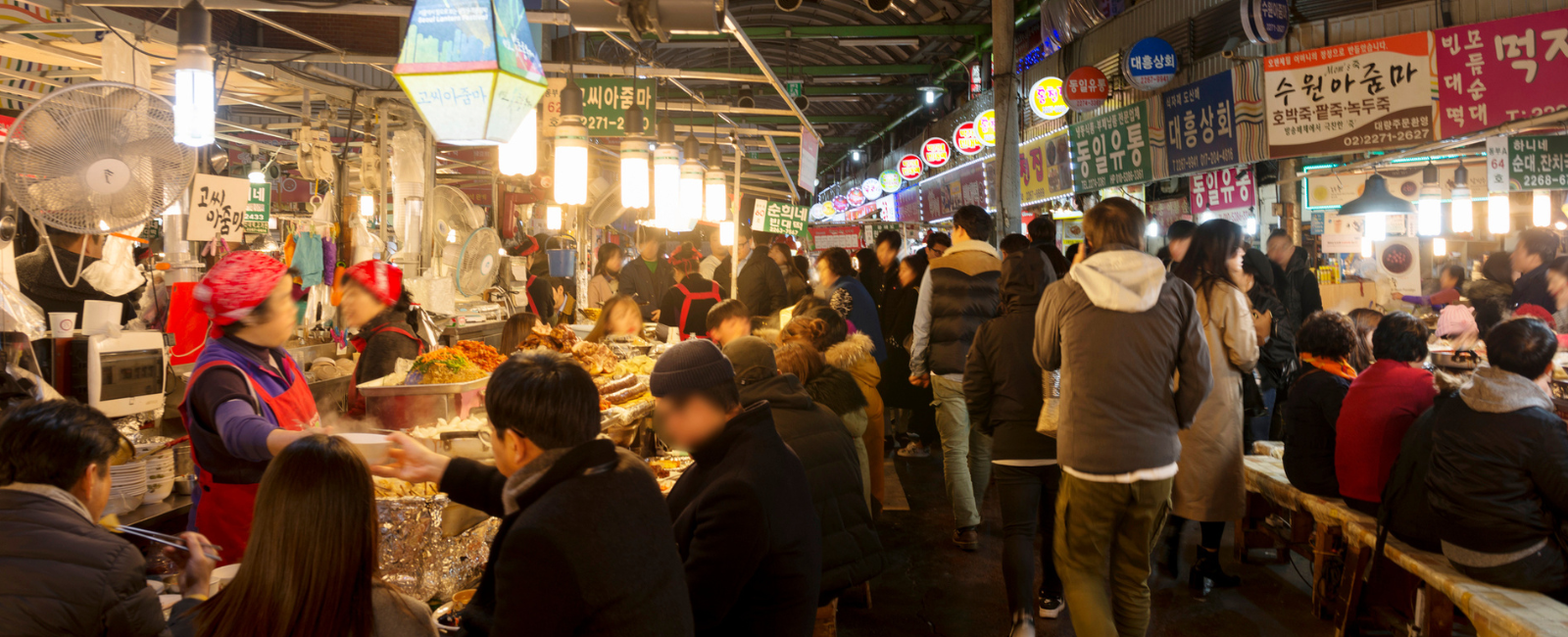
Are you looking for a travel adventure with a mixture of ancient cultures and exciting modern trends? Seoul, the bustling capital city of South Korea, may be just what you’re looking for.
Ever since the K-pop hit Gangnam Style burst onto YouTube screens in 2012, Seoul has been firmly cemented on traveller’s to-do lists, and recent cultural sensations like Netflix Squid Game and Oscar-winning thriller Parasite, have piqued traveller curiosity with the Korean capital even further.
Whether you're interested in K-pop, fashion, or indulging in kimchi, we’ve put together this travel guide to make your itinerary smoother than homemade knife-cut noodles. Read on for this first-timer’s travel guide to Seoul.
Must-see sights
Running through downtown Seoul Cheonggyecheon Stream was built as part of an urban renewal project and offers a peaceful escape from the busy city. At 11kms long, the stream was originally there during the Joseon Dynasty (1392-1910), later covered with a highway and most recently uncovered and restored as a recreational space.
For architecture lovers, wander through a traditional Bukchon Hanok Village with wood and stone houses. The name Bukchon translates to northern village. Join a walking tour to admire the architecture of these houses dating back to the Joseon Dynasty.
Not far from Bukchon village is Gwanghwamun Square, a dedicated cultural space for statues of Joseon Dynasty kings, generals and museums. Greeting you to the square is a towering golden statue of King Sejong.
In the same precinct is the impressive Gyeongbokgung Palace, first built in 1592. With a backdrop of rugged mountains and housed alongside a tranquil pond, this palace is the largest in Seoul. Visit at 10am or 2pm to see the changing of the guards and take the time to wander through the National Palace Museum of Korea and National Folk Museum at the same site.
Add to your itinerary, the newest attraction in Seoul - Cheong Wa Dae (The Blue House). This former home to South Korean presidents is now open to the public to enjoy. The roof, with 150,000 blue tiles, is responsible for the luxurious residences’ moniker.
Set aside a day to visit regional Demilitarized Zone (DMZ) attractions bordering North Korea. Explore underground tunnels and peer over the border from summit observatory points.
Discover South Korean culture
Immerse yourself in Korean culture by wearing a vibrant hanbok, a traditional Korean gown. The hanbok experience, complete with hairstyling, is available when visiting a palace such as Gyenongbokgung.
Recharge in a serene Templestay set in the mountains listening to the gentle sounds of wind chimes. Follow in the footsteps of Korean Buddhism’s daily lifestyle and rituals with an overnight stay or day programs.
Venture outside the city to a charming Korean Folk Village set on over 200 acres of land nestled beside the mountains and river. Here you can join in all the fun from the Joseon Dynasty with performances of music, dance and martial arts.
Dive into modern Korean culture at HiKR Ground a new media and art experience centre. With all things K-pop, K-drama, K-Art and more delivered via immersive smart technology. Or find yourself clubbing in the Gangnam district doing the famous horse-riding dance before snapping a photo of the Gangnam Style monument.
Before leaving the Gangnam district visit the very Instagrammable Starfield Library with 13 metre tall bookshelves set over two levels.
Add a stop for wellness
Kick off your boots and relax at Jimjilbang spa after a day of culture and sightseeing in a traditional Korean sauna known as jjimjilbang. The term “jjimjil” refers to the treatment of illness through perspiration from the old belief that sweating helps release toxins. To enjoy Jjimjilbang expect to start in a change room where you can change into a provided t-shirt and shorts before entering communal facilities for all genders where you’ll find various sauna rooms from materials such as mud, charcoal and salt at various temperatures.
Shop till you drop
Fashion savvy travellers look no further than Dongdaemun Market, the largest commercial district of wholesale clothing, textiles and speciality stores. Also, home to the Dongdaemun Design Plaza, a neo futuristic landmark that is home to Seoul Fashion Week, architecturally designed by Zaha Hadid, the first woman to win Pritzker Architecture Prize.
If you’re looking for vintage fashion treasures, you’ll want to roam the streets of the Dongmyo Flea Market. Popular with seniors and more recently young people you can also find antiques, vinyl records and other trinkets.
To stock up on beauty products, mainstream clothing and artisan goods, the busy streets of Myeong-dong are the place to be. It’s easy to spend a day here, but don’t worry there’s plenty of tasty street food to keep you going.
Seoul food
Sample a variety of different foods with a dosirak (Korean lunchbox) from the Tongin Market Doshirak Café. Here you are given traditional coins on entry to purchase food for your dosirak from various vendors. For less than 5,000 won ($5.70 AUD) you can easily fill your plate with foods such as fried meats, noodles, curries, egg rolls and pancakes.
Follow the scent of street food steaming, frying and simmering to the Gwangjang Market. Over 70 years old with some of the stores in operation for over 30 years, find Korean favourites like giant mung-bean pancakes, fried omelettes, twizzled donuts and steaming hot knife-cut noodles.
Hidden in the back alleys of Jongno 3-ga’s Nagwon Arcade, you can find a row of outdoor street food stalls called Pojangmacha ‘tented wagon’. For eager K-drama fans, the atmosphere is the reason to seek out these modest outlets where deep and dark confessions are spilled under the plastic tarp while drinking a bottle of soju.
Vegans will be pleased to hear they can enjoy fresh seasonal produce free from meat products at Balwoo Gongyang. Here temple food is consumed by Buddhist monks and nuns and is known to be balanced and rich in flavour.
If you are eager to devour the full Korean foodie experience, you must try Hanjeongsik. A full-course meal with many delicacies, side dishes and condiments featuring marinated meats, vegetables, soups, steamed food and hot pots, this is the perfect option for visitors wanting to taste it all.
Don’t leave without a stamp of Chimaek in your foodie passport - a paring of fried chicken and beer typically served in the evening and shared with friends at a restaurant, park or baseball game. When in Suwon you can also visit the UNESCO World Heritage Suwon Hwaseong Fortress and stop by Suwon Chicken Street for Korean-style marinated chicken.
Where to stay
If travelling with kids, you’ll want to stay in a hotel near Lotte World, the world’s largest indoor amusement park. Hotel Lake or Jam Sil Tourist Hotel are both nearby.
For a romantic getaway, there are many luxurious properties dotted around the city. L’Escape, a 19th century French-inspired hotel offers lavish and elegant suites and is also the setting of many K-dramas. Fill your ‘Gram feed with enviable photos from the Cimer Spa at Paradise City luxury resort.
On a tight budget? Not to worry, there are many hotels catering to all budgets around Myeongdong and Dongdaemun neighbourhoods. Seoul also offers plenty of guest houses with accommodation options similar to hostels.
Top travel tips for first-time visitors to Korea
- Currently Australian and New Zealand passport holders do not need to apply for Korea’s Electronic Travel Authorization (K-ETA) when travelling to South Korea between 1 April, 2023 and 31 December, 2024.
- For navigation, don’t use Google Maps, use Naver Maps. Korea is one of the few countries where Google is not the dominant Search engine, so Naver Maps has better and more accurate results.
- Dial 1330 for tourist information or interpretation.
- Though English signage is common and many Koreans can speak some level of English, it’s polite to learn some basic Korean such as annyeonghaseyo (hello) and kamsahamnida (thank you).
- Cards (and international cards) are accepted almost everywhere, and some shops don’t accept cash.
- Rent a SIM card or Wi-Fi dongle at the airport on arrival to Korea. SIM cards are not readily available outside the airport.
GETTING THERE






